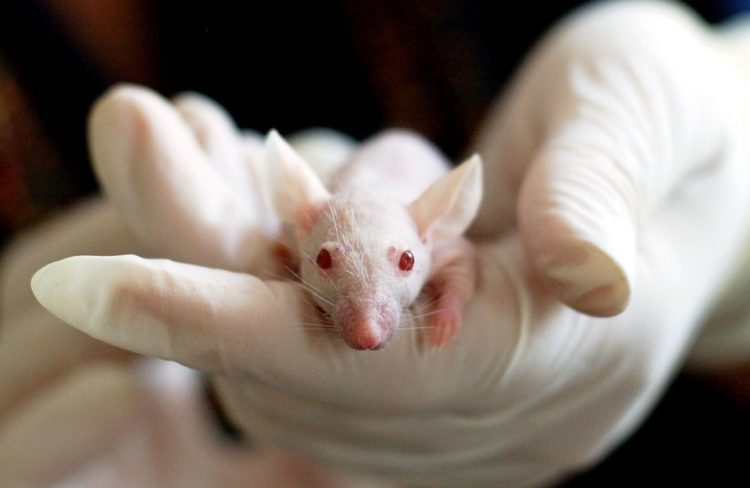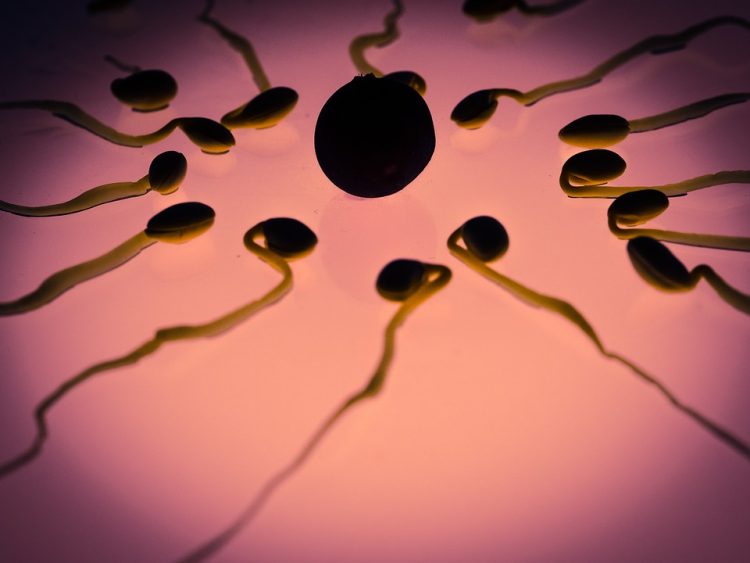Can a Low Dose of NMN Increase Fertility?
There is an irreversible and unavoidable aspect of reproductive aging that begins when a female reaches her late 30s. As women are now waiting longer to start families, this biological race against time is one of the main contributors to the increasing rates of infertility worldwide.
Although we can't stop the years from going by, new research in mice has found that there may be a way to mitigate some of the effects of female reproductive aging and increase fertility as we reach the years approaching 40 and beyond.
The Stats on Infertility
Approximately 12% of women in the United States in their reproductive years have trouble getting pregnant or maintaining a pregnancy, reports the Centers for Disease Control and Prevention (CDC). Additionally, one in four couples has been affected by infertility worldwide, suggests finding from the World Health Organization (WHO).
After reaching age 35, the likelihood of having infertility struggles jumps to one out of every three women. With statistics like these, it's no wonder that women and couples are looking for solutions to help increase fertility. However, advancing maternal age isn't the only reason behind the rise in infertility rates. Given that the female reproductive system is made up of the ovaries, fallopian tubes, and uterus, dysfunction, or disorders in any of them could contribute to reduced fertility. Other factors that can impact fertility include:
・Obesity
・Exposure to endocrine disruptors (like BPA in plastics)
・Polycystic ovarian syndrome
・Endometriosis
・Hypothyroidism
・Other underlying medical conditions
Plus, it's important to mention that men also play a crucial role in fertility; 20-30% of infertility cases can be linked back to issues with the male reproductive systems as well.
Although there are options for those struggling with infertility, like assisted reproductive technologies that include in vitro fertilization (IVF), these treatments can be costly, invasive, pose a risk, and don't necessarily have a high success rate, especially as women age.
However, there may be a new option on the horizon to help increase fertility. Emerging research has found that a low supplemental dose of nicotinamide mononucleotide (NMN) was able to restore fertility in aging female mice. NMN is a precursor to NAD+, a crucial coenzyme needed for healthy aging, DNA repair, and metabolism.
As NAD+ levels decline with age, so does the quality and number of oocytes, which is the technical name for egg cells before they fully mature into eggs. Oocytes are not self-renewing cells - the amount a woman has at birth will be the highest number she ever has. Due to this finite number of cells that decrease year after year, a woman's fertility is largely based on both the number and the quality of oocytes she has left. While there's no way to increase the number of oocytes, we can improve the quality and functioning of the ones remaining.
Based on this, the researchers behind this new study, published in the February 2020 issue of Cell Reports, hypothesized that boosting NAD+ in the oocytes of mice through supplemental NMN may be a low-risk and non-invasive method to increase fertility.
What Did the Researchers Find?
In this study, the researchers tested several different ways in which NMN could be used to improve fertility or oocyte quality, both of which begin to decline at around eight months of age in mice. Let's take a look at the three most important results that were reported in Cell Reports:
1. NMN supplementation increased NAD+ in oocytes.
When comparing mice between four and five weeks old to 12-month old mice, the older mice had reduced levels of NADPH in their oocytes, as is to be expected with increasing age. NADPH, a required cofactor for anabolic reactions, is the phosphorylated form of NAD+ (meaning it has a phosphate group attached). The researchers measured this form rather than NAD+ due to bioanalytical challenges of measuring NAD+ in oocytes; nonetheless, the function of both NAD+ and NADPH are very similar - both decline as we (and mice) age. After the 12-month old female mice received water that was treated with NMN at 2 g/L for four weeks, levels of NADPH in their oocytes did increase significantly, indicating that NMN was able to restore the age-related decline in NAD+ seen in the female reproductive system.
2. The low dose demonstrated a greater impact on fertility than the high doses.

The most interesting outcomes of the study resulted when the researchers gave 13-month old mice two different doses of NMN for four weeks. At 13 months, these mice are very near the end of what's considered their "reproductive years."
The low-dose group received 0.5 g/L of NMN-treated water, while the higher-dose group received 2 g/L of NMN in their water. After introducing male mice for breeding, the low-dose group saw significant increases in the number of live births, as well as reductions in the time it took to get pregnant. In contrast, the higher-dose group did not see the same benefits of increased fertility.
3. NMN supplementation improved IVF outcomes.

Lastly, the researchers also looked at how the oocytes of aged female mice responded to IVF when receiving NMN treatment. After the 12-month-old mice received 2 g/L NMN in water for four weeks, their oocytes had larger diameters - oocytes with smaller diameters are linked to worse outcomes after IVF. When the oocytes of the mice received IVF plus NMN-water for two, seven, 14, or 28 days, a longer treatment of NMN led to improved inner cell mass size, which is linked to improved fertility outcomes after IVF.
Similarly, IVF was performed using in vivo oocytes from 12-month-old or 4-week-old female mice, and the embryos were then cultured with or without NMN. After supplementation with NMN, the embryos from the oocytes of the older mice had improved blastocyst formation, but the younger mice did not see similar benefits. This improvement in embryo development solely in the aging mice suggests that NMN supplementation during IVF in younger years may not provide the same therapeutic benefits, likely because NAD+ levels have not yet declined.
The Caveats to Consider
While this study does provide encouraging and hopeful results for improving fertility, there are a couple of important points to consider when interpreting the research.
Less is More
These results of the study suggest that while a larger dose of NMN did benefit oocyte quality by increasing NAD+ levels, it did not actually improve fertility and birth outcomes in the same way the lower dose did.
This could be due to an upper limit of NMN tolerability or an increase in nicotinamide, a degradation product of NMN that inhibits sirtuins, which are a family of NAD+-dependent proteins that regulate cellular health and promote healthy aging. Although nicotinamide (the amide form of vitamin B3) does have anti-inflammatory and neuroprotective benefits, it may also increase oxidation when consumed or produced in excess. If NMN was consumed in excess of what is needed, then nicotinamide would be produced as a byproduct in excess as well.
In regards to the current study, although the fertility benefits were not seen in the higher dose group, it's important to note that no adverse effects were observed either. Moreover, the aging mice in this study did not have to take NMN long before seeing benefits: 50% of the mice on the low dose of NMN achieved pregnancy by the third week of supplementation, indicating that favorable fertility outcomes may be achieved in a short amount of time.
But Humans are Not Mice
Yes, we know that humans are not mice, and mice are not humans. We can't automatically extrapolate data from mouse studies and assume that they will apply to humans - especially a specific subset of humans like reproductively-aging females.
But there are several reasons that mice have been used in medical research for decades. Perhaps surprisingly, humans and mice have very similar genomes, genetics, anatomy, and physiology, which make comparing results a bit more useful. In regards to this study, mice have very similar reproductive systems to humans, albeit a shorter gestation period. Mice also have much shorter lifespans than humans, allowing us to study disease development and longevity more easily, as one mouse year equates to approximately 30 human years.
Again, although we can't directly apply these results to us, as humans, the researchers of this study acknowledge that this may be a clinically relevant treatment for infertility by improving outcomes of both natural fertility and IVF.
A low dose of NMN may be an appropriate and simple solution to helping the millions of women worldwide who want to get pregnant yet have been struggling in their fertility journey for too long. As always, further research - especially in human clinical trials - is warranted before anything can be said definitively. Nonetheless, the risk of taking a low dose NMN supplement is low, and the benefits to fertility may be high.
Your Takeaway: Can NMN Increase Fertility?
・In reproductively aging mice, a low dose of NMN was able to increase birth rates and reduce the time to pregnancy more than a higher dose of NMN
・The higher dose of NMN was able to restore the age-related decline in NAD+ levels and oocyte quality of aging female mice, as well as improve outcomes of IVF in cultured media
・In the future, we may see that low-dose NMN supplementation could be a non-invasive and low-risk way to increase fertility or allow for pregnancies at an older age to remain viable, compared to the invasive and expensive IVF treatment
・Research on this topic in humans is needed before any definitive claims can be made about the impact of NMN supplementation on improving or increasing fertility outcomes
